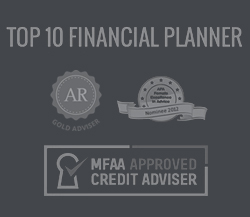Education is the gift that keeps on giving. If you are considering a private school this article is for you as we discuss how to save for your child’s education.
Education is the gift that parents can give their children that keeps on giving.
But if you are considering private schools it is a gift that comes with a significant – and usually rising – bill attached.
Cue visions of stately buildings, sweeping playing fields, uniformed students—and steadily rising school fees.
One in three Australian children attend a non-government school1 and education is the second largest expense for many families, with some spending a third of their household budget on school fees2. Private school education costs are outpacing both inflation and wages growth3.
A cursory internet search found that a private school in New South Wales charges almost $37,000 a year for a year 12 place.
And even if you were sending your child to a public school, fees aren’t the only thing you need to plan for. Other items to consider include is the cost of textbooks, contributions to the increasingly prevalent compulsory laptop program, school uniforms and an endless list of ‘back to school’ items you’ve never heard of.
So savvy parents start planning early. But what’s the best way to save for your children’s education? And how can you avoid the trap of redrawing your mortgage, or worse?
The first step to successfully funding your children’s education expenses is planning.
And the first question to ask is – how much will you need?
The costs of education vary dramatically depending on both your choice of school and how early you choose a fee-paying school. There is an enormous difference between sending a child to a private school from kindergarten and going private for high school only. Some schools also offer day-care and pre-school places, potentially adding up to five extra years of fees.
Once you understand how much you need, the next question is how long you have—and how much you can add to your savings pool as you go. The longer the time frame before school fees become due, the more time there is to invest and compound your earnings. The more you can save along the way, the faster you will reach your goal.
It’s also important to think about your risk tolerance as higher returns are possible only with higher risk.
The next step is to select an appropriate savings vehicle for your money.
There are three basic ways to hold and grow the money you save for your children’s education: you can save regular amounts into a bank account, but given record low interest rates that is looking less attractive, you could build an investment portfolio – a basket of shares for example – or buy a managed fund or a more specialised product like an investment bond.
Saving your money in the bank might seem the safest option, but with school fee growth outpacing inflation it can actually mean you go backwards. Still, it remains a good option if your timeframe is tight or your risk tolerance low.
For people paying off a mortgage it can make sense to use an offset account to park savings. An offset account effectively earns interest at an equivalent rate to your mortgage. You can then redraw the funds when it is time to pay the school fees.
Managed investment schemes are another option for growing your savings over the years before school begins. Many people opt for making regular contributions to managed funds) or exchange traded funds allowing their savings to compound over time.
Managed investments can be terrific for providing diversification, which can reduce your risk of capital loss by spreading your investments over different asset classes and over hundreds or thousands of individual investments. They also come with the flexibility of withdrawing fund whenever you need them.
But as with every investment, do your research as some of these products come at a high cost, with fees varying wildly.
Investment bonds are another option for saving but they are a peculiar beast so extra research may be required to understand what you are investing in and any specific restrictions or conditions.
As you make these decisions, keep two principles in mind—watch your costs and stay the course.
Remember that lower-cost investments usually outperform their higher-cost counterparts4, and starting early will give you – and your children – the best chance of success.
Contact us today if you would like to work out a strategy to help save for your child’s education. Call us on Ph 1300 136 508.
1 https:https://intl.assets.vgdynamic.info/intl/australia//www.abs.gov.au/ausstats/
2 https://edstart.com.au/blog/record-low-wage-growth-impact-on-family-budget-and-school-fees/
3 https://edstart.com.au/report
4 https://personal.vanguard.com/pdf/ISGSFA.pdf
Source: Vanguard
Reproduced with permission of Vanguard Investments Australia Ltd
Vanguard Investments Australia Ltd (ABN 72 072 881 086 / AFS Licence 227263) is the product issuer. We have not taken yours and your clients’ circumstances into account when preparing this material so it may not be applicable to the particular situation you are considering. You should consider your circumstances and our Product Disclosure Statement (PDS) or Prospectus before making any investment decision. You can access our PDS or Prospectus online or by calling us. This material was prepared in good faith and we accept no liability for any errors or omissions. Past performance is not an indication of future performance.
© 2022 Vanguard Investments Australia Ltd. All rights reserved.
Important:
Any information provided by the author detailed above is separate and external to our business and our Licensee. Neither our business nor our Licensee takes any responsibility for any action or any service provided by the author. Any links have been provided with permission for information purposes only and will take you to external websites, which are not connected to our company in any way. Note: Our company does not endorse and is not responsible for the accuracy of the contents/information contained within the linked site(s) accessible from this page.





